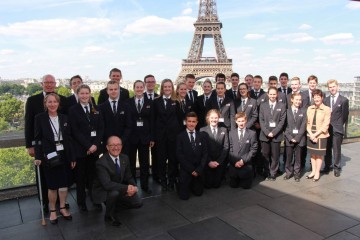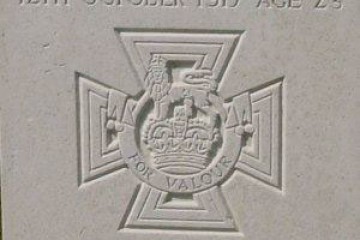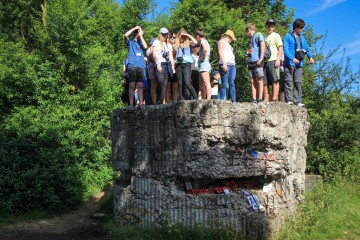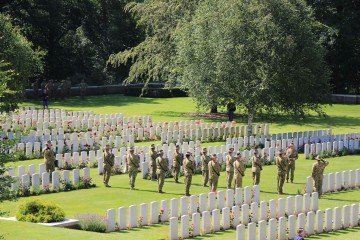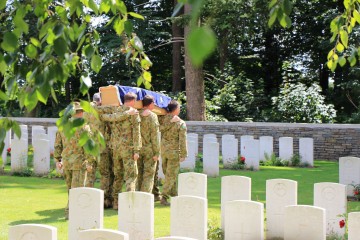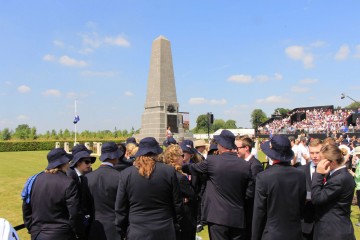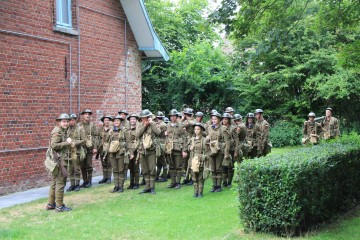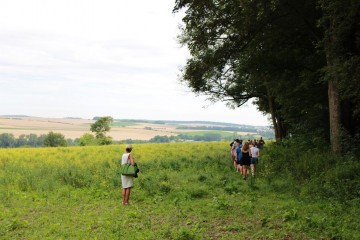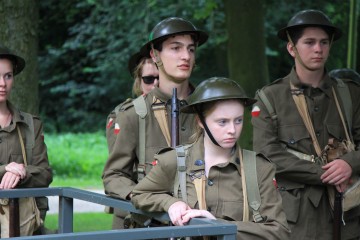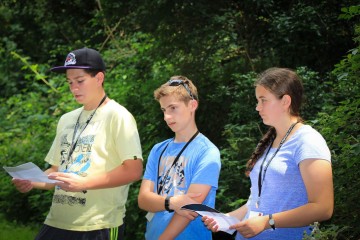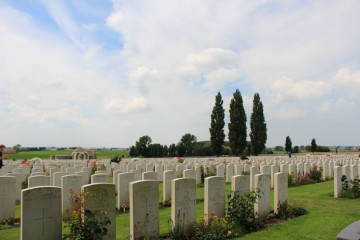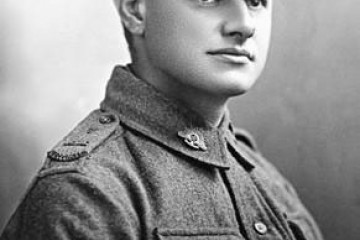Noah McMillan Class Presentation and Photo Gallery
Concrete German blockhouse guarding the approaches to Messines, (Mesen) Belgium. This German blockhouse and the others around were captured by members of the New Zealand Expeditionary Force and the AIF on 7 June 1917.
Image source: PAMS 2016 photo collection
Premier's Anzac Memorial Scholarship 2016
Class Presentation
Please put your hand up if you’ve heard of Gallipoli, leave your hand up if you have an image of Gallipoli. Leave your hand up if you understand Gallipoli in our national identity. Now keep your hand up if had heard about a place called Pozieres before today. Charles Bean was Australia’s first official war historian. He travelled and visited the battlefields where Australians had fought. Bean recorded the stories of Australian soldiers in military campaigns, far from home. When writing about Pozieres Bean had this to say ‘Pozieres†is†more†densely†sown†with†Australian sacrifice†than†any†other†spot†on†Earth’Æ And let’s not forget he had already visited and written about Gallipoli.
Pozieres is a small village in The Somme region, North of Paris. The Somme formed part of what is known as the Western Front and today looks very different than it did 100 years ago. Pozieres was captured by the Australian first division 23 July 1916. The first division managed to hold on to the location through repeated artillery fire and bombardment by the Germans. The first division was relieved just four days later by the second division, but had already suffered over 5,000 casualties.Casualties include soldiers who were injured, captured or killed. The second division continued attacks against the German’s trying to recapture Pozieres. The first offensive on the 29 July was unsuccessful. However, the second attempt on the 2 August saw the Australians capture and hold the German’s position. The fourth Australian division relieved them on the 6th of August but not before the Second Australian Division had suffered nearly 7,000 casualties of their own.
The fourth division came under continuing German artillery fire for another day before eventually defeating the Germans on the 7th of August. The Germans never attempted to take Pozieres again. The Battle of Pozieres continued for a further four weeks to strengthen the Allie’s position on the Western Front, it was to be Australia’s first military victory, but at a considerable cost. Whilst the deaths of over 8,000 diggers at Gallipoli sits in the national psyche as the moment the young nation of Australia is baptised by blood, ultimately Gallipoli was a failed campaign lasting 8 months. In contrast The Battle of Pozieres was a military success in only six weeks but at the cost of a further 6,800 Australian soldiers.
The numbers of dead make sentiment like “fields bathed in the blood of young men”, seem morbidly poetichowever, having now stood amongst cemeteries with thousands of headstones of these young men who were brothers, fathers, and sons never to return home to their loved ones showed me the reality of war. As part of my scholarship tour I had to research the life and battlefield experiences of an Australian soldier. As I stood before the grave of my assignment I realised that Captain Clarence Smith Jefferies VC from the Hunter region of NSW, was more than a name on a list to be researched. Being in the fields where he and a small group captured a German machinegun emplacement, and where he likely took his last breath. I was able to reflect that these headstones all tell their own story. These headstones represent only some of those who died, as we heard stories of french farmers going about their daily lives and unearthing remains of Australia’s war dead 100 years on.
Page 4 of 5 I would like to thank, the Department of Premier and Cabinet for making this scholarship available. The teachers and adults who came with myself and the 23 other scholars. Mrs Hetherington and Mrs Thompson, for having confidence in nominating me to apply for the scholarship. And a special thanks to the person who received all the messages, who shared the excitement and worried as much as my own parents while I was in France at a tense time, Mr Smith.
